As the international event circuit swings into gear, John Elmes hears from the fixers who help producers overcome budget squeezes to get projects onto screen
Audience viewing habits are evolving rapidly across the globe, turning production financing models upside down and leaving broadcasters and streamers’ budgets squeezed like never before.
At the same time, a new era of production is emerging, presenting fresh opportunities for those with the right mindset and talent to navigate the new landscape – something at which the four execs taking part in this Broadcast International roundtable are proving adept.
How do you feel about the market at present?
JIMMY HUMPHREY (founder, Marmalade Sky) I am pretty optimistic. There is no getting away from the fact that there are a lot of struggling producers, and a lot of conversations are quite difficult because people are struggling to get things away. If you’re plucky and creative, there is plenty of opportunity out there. But unlike the way things used to be, there’s going to be a lot more piecing together.
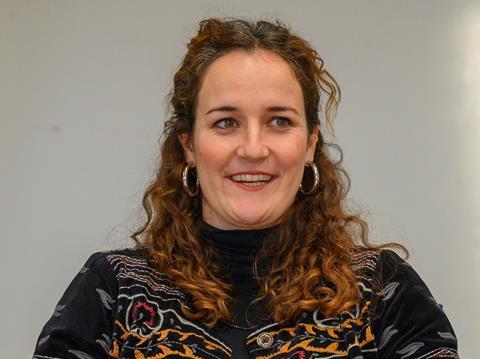
FRANCESCA JOHNSON (founder, Table41 Entertainment) The landscape is evolving. It’s very much like the Wild West – you could get money from brands, you could piece together a co-production, or you might get a commission. If you have a strong idea and you’re in development, it’s always good to start by trying to get a broadcaster on board. But has that happened for me in the past year? No – I’ve not had an outright 100% commission. It’s always about bringing additional financing – a co-production partner. Once you accept that, there’s so much opportunity.
ANDREA SCARSO (partner, IPR.VC Management) We effectively bring private equity money into the industry and are providing a clear opportunity to producers to finance their shows. There are plenty of packages and products available, which is a good sign because it means that content and creativity is still very much alive.
On the other hand, there are so many packages available because producers have fewer chances of getting a project off the ground with one single commission or a very simple deal. We offer an alternative.

MARC LORBER (founder, The Art of Coproduction) We’re going to see more consolidation and contraction, and friends and colleagues not being in the same place. There’s political instability in a lot of countries, which are either going through elections or are about to. Interest rates need to hold steady or go down so money becomes cheaper and people feel a little more flush.
I’m waiting to hear from distributors between Mipcom and the London TV Screenings to see whether talk has turned to action – to offers, contracts and the numbers they were hoping for. Going into the new financial year, do they have the same, more or less money? I still find it very conservative out there but, amid the chaos, there’s opportunity.
Where have the funding problems arisen from?
FJ Lack of decision-making. You can bring a project that is very clear and has talent attached – and maybe money attached or access secured – and a commissioner might say they want to explore it, but they are looking at six other things as well.
And they have just been bought out by another company that is looking at six other things. They don’t have a system in place yet for jointly making a decision, so the producer gets stuck in limbo. It wasn’t always like that - before Covid and all the streaming consolidation, or even before streaming arrived.
AS There are two things: one is how M&A activity changed during Covid and in the period since. The way a company is acquired and sold has changed in the past 18 months and that’s having an effect on content. There’s a lack of clarity over the values of some of those companies now.
The other thing that’s happened – much faster than expected – is the development of the new creator economy. That is putting a huge amount of pressure on traditional TV audiences and producers. It’s not easy for them to adapt their model or to understand the dynamics of the creator economy model.
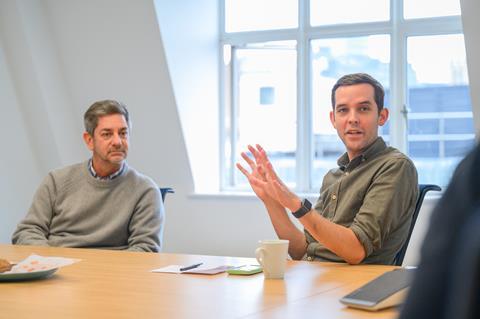
JH There’s a disconnect between what buyers need for their viewers and what they have to spend. For traditional linear broadcasters, particularly public service broadcasters that have a remit, maybe they need something that will cater to the audience in that market but they haven’t got the budget to commission it most of the time. How do they get those shows?
If a producer is trying to sell Britain’s Favourite Radiators, for example, no one cares about that outside of the UK. Not everything is pre-sellable. Fifteen years ago, if Channel 4 wanted that show, it would just commission it. But now it is going to have to bring a brand on board or find some equity finance.
FJ Transparency is important too. If a broadcaster wants something but can’t pay for it, it should just say so. There are good commissioners who will do that but, because of the consolidation and human error that naturally occurs when egos come together, people don’t always want to be transparent.
What models do you employ?
JH I wouldn’t say there’s a typical model. I’m working on projects at different stages. It might be that someone comes to me with a top-line idea and we’ll work it into a deck and take it out to market to try and sell it, and piece the finance together from the ground. Or it might be that someone comes with a commission from the UK’s Channel 5, for example, which is only putting in 50% of the budget, so there’s a need to find the rest.
A lot of what I do is work with producers that don’t have relationships with distributors. They have a commission but they don’t know where to go with it. They don’t necessarily need money – though that doesn’t happen very often.
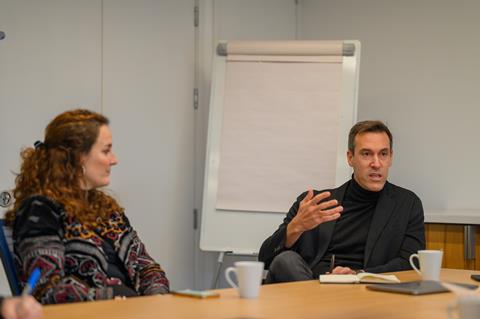
FJ I don’t do distribution, it’s more about creative development – either with a new company that’s growing and doesn’t have a full team, or with a senior development executive. A good example is Dream Bay Entertainment, which is managing digital talent and developing a slate of scripted and unscripted shows. I’ve come in to help them build that slate, focus priorities, and build packages around key projects.
With other companies, it might be that there’s a piece of access or a specific project that they need a dedicated individual to work up. With development, you have to give so much love, but you can’t do that all the time if you’re running a company, producing shows and running a slate.
I come in and zero in on one project, get it fully developed and packaged, and then identify the right people to bring it to. Then I have a pitch sales role once the project’s ready. Who are the buyers that we could bring this to? Who are the brands that might contribute? Where might we be able to get a pre-sale and then bring it to other people?
When does the money question come in?
FJ When I first talk to people, I’m not asking what the budget is, it’s all about the idea. Then I’ll say, it’s either £200k-£400k, £500k-£700k or £1m.
JH It’s absolutely the first thing I ask.
“People are either unrealistic or have the wrong numbers and the people I’m going to are smart enough to pick them apart”
Marc Lorber
ML They should be thinking about it immediately. I ask for material – the deck or script if it exists. The other thing I ask for is the finance plan. The rough finance plan might be Plan A, but by the time we’re done, it’s Plan J.
People are either unrealistic or have the wrong numbers and the people I’m going to [for funding] are smart enough to dive in and pick them apart. I’m trying to be realistic about the figures and if we’re talking about a gap, how much wiggle room do we have?
JH I’m almost reverse-engineering it. If someone brings me an idea, I’ll be thinking about where I can take it to. But thinking about where I’m going to take it to will dictate what the budget is. So then I’ll almost be saying, ‘The budget needs to be this for this buyer, otherwise it’s not happening’. Or, ‘You’re going to have to completely change the show, or look at a different model’.
What projects are you currently working on?
AS We have a project called Hildur, based on a popular crime book series from Finland. The first one is a co-production between Iceland and Finland. We had a relationship with the producers in Finland and they were going to explore the more traditional model of financing – getting a sales advance and then trying to find the remaining equity. There was soft money coming from Finland and Iceland, and some local pre-sales.
“We are looking beyond the first exploitation, retaining value as investors and trying to keep that long tail of income”
Andrea Scarso
We came in with a proposal to underwrite the remaining financial risk, strategically putting the project together as executive producers with the two creative partners, and then going to market, attaching distribution. We are doing it in a way where we have value beyond the first exploitation, retaining value as investors and trying to keep that long tail of income.
FJ One project, called DNA Kitchen, just went out on YouTube. It’s a cooking format where a chef challenges a comedian to create a dish based on his or her DNA story, and it’s fully funded by genealogy company Ancestry.
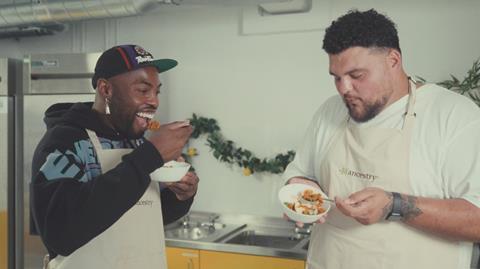
I developed it while I was at UK indie Anyway Content and was allowed to retain the IP when I left. I brought it to Derren Lawford’s Dare Pictures. It’s gone on YouTube as a proof of concept and we’re then going to use that tape, which is a nice piece of 15-minute short-form, to pitch the format and sell the series.
It’s in with a big distribution group now, and we also have a possible production partner in the US that wants to fund up to 50% of the show with Ancestry. It’s going to take more time and we need to get Ancestry on board for the long-form approach, but it shows the model of money coming from different pockets and perseverance around the idea.
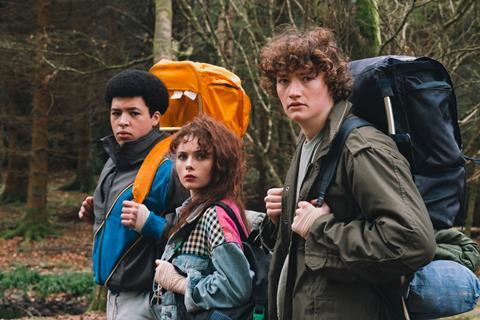
ML I do a range of things. Some you might call salvage – rescuing projects that may have fallen out of their production or distribution model. A good example is Video Nasty, which premieres on BBC Northern Ireland in January. Without going into too much detail, it had fallen out of distribution, so it was about finding another distributor and getting a preacquisition – as an original from an Irish broadcaster in addition to BBC NI. We brought in WDR in Germany.
Then there’s something like Mix Tape – a British book optioned by an Irish company, developed with a co-producer in Australia, who then took it to an Australian streamer [Binge] as the only broadcaster. It had also fallen out of distribution, so we looked for another distributor and, fortunately, there was a competition, so we were able to increase the amount we were asking for. But it also needed equity funding, which in this case came from the Finnish Impact Film Fund.
JH Most of the projects I work on are in that squeezed medium-budget space, which everybody keeps talking about as being dead. In commissioning, it is largely dead, but it can work for the distributor-first model where you’re trying to piece together the finance with a bit of money from the UK, and a little bit from perhaps Australia and the US.
They’re often quite broad subjects that appeal in every market. I work on a lot of true crime and shows in the male-skewing factual space – areas where traditionally Discovery and Nat Geo would have commissioned.
AS What’s the budget range?
JH Well, not high, and these are high-volume pieces as well, so there are economies of scale. I would say usually around £100,000-£200,000 an hour. I often work closely with a production company in Australia that will get a small local licence and trigger the tax credits, which will get things moving. If, say, SBS is on board already in Australia, then it’s an easier sale for me. It gives broadcasters comfort when someone like that is on board.
What models are working?
FJ It depends very much on the client and the project. I worked with Beach House when it was part of Blue Ant, before becoming part of Fremantle. C3, part of Cineflix, is another client. Obviously, we’re not going to go to distributors with any of their projects because they already have a distributor in mind.
Knowing that there’s potential distribution money already involved once there’s a market appetite for something is useful. When that’s not the case, I ask, ‘Is the project going to sell itself? Does it have the specificity, the attachment, the access or the talent/IP already optioned that’s going to sell?’ Sometimes, even if you have that, is it better to get the financing first?
JH I work similarly to Francesca. If a project comes to me with no one attached, I talk to distributors very early, but I will be having those conversations concurrently to pre-sale conversations. And I’ll be very transparent about who I’m talking to and where I’m hoping to raise budget.
For example, I’ll say quite early on that UK and Australia rights will probably be gone, but rest of world will be available, and I’ll keep you across it. Getting their buy-in early, though not necessarily with a concrete offer, is important.
ML Nothing’s off the table right now. You want to be loyal to your service providers, but in this world, they’ve all got to work. So you go to your key suppliers, stages, equipment houses, post and VFX houses, and try to identify the deal plus a mark-up. On the other hand, you’re asking if they can invest equity. We’re not talking huge amounts, but can they invest in the same position as other equity investors in that project?
Brands are an option, and pre-sales or co-commissions or co-production [are attractive], especially if you’re trying to target a quota country where that money is meaningful early on.
What is your advice for the sector on funding?

AS My suggestion to the producer is to keep an open-minded approach when you’re thinking about where to raise the money. If you have a strong project, you can come to people like us, which will look at it as an investment opportunity if we believe there is potential for upside. But equally, you can have a discussion with an NGO or other organisation that also has equity, but their ultimate goal is not necessarily making the money back.
What can be done to help solve funding issues?
JH There needs to be more collaboration between buyers – that’s key. There will be more of that going forward – a lot more windowing. There will have to be because I can’t see a world in which budgets are going to return to what they were. If anything, they’re going to go down. Everyone’s going to need to share a lot more.
“You need to be able to pitch it to your mum, your niece or your cab driver. If they don’t get it, a financier’s not going to get it”
Francesca Johnson
FJ If you’re going to an investor, trying to find a new distributor or getting something into production, you need to have all these things we’ve talked about – right partner and network, plus the flexibility to make a deal happen in any way. But you really need to start with an idea that is simple, clear and specific, and you have to focus on that idea.
I always do a test slate: you need to be able to pitch it to your mum, your niece or your cab driver. If they don’t get it, a financier’s not going to get it. And you can’t expect a buyer to pay for it.

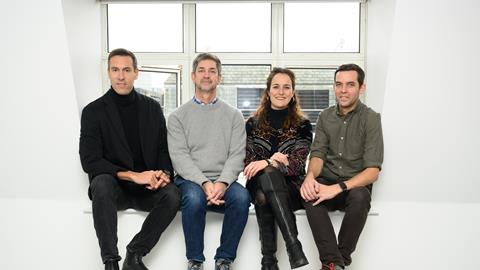



No comments yet